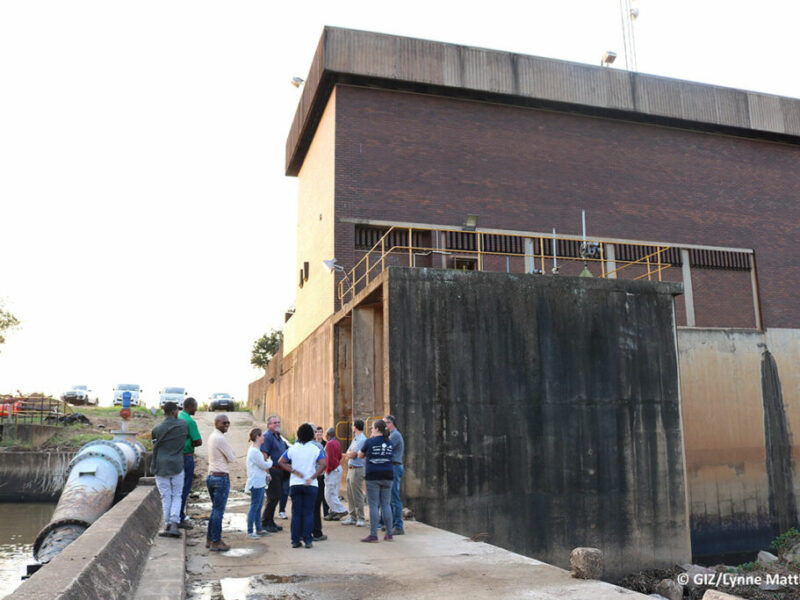Water requires urgent action in South Africa.
South Africa is a semi-arid country that receives half the world’s average rainfall. Drought, ageing infrastructure, a lack of financial sustainability and degraded landscapes all place the country’s water security at severe risk.
The NBI seeks to enhance water security in the country by fulfilling the following objectives:
- Strengthen company best practice
- Enhance the resilience of municipalities and the private sector using grey-green infrastructure
- Enable good governance through a capable State
The key projects to meet these 3 objectives are outlined below:
Water Footprint in Action

uMhlathuze Water Stewardship Partnership
The uMhlathuze Water Stewardship Partnership (UWASP) is a river basin collaboration of business, government and civil society established to address water security challenges in the uMhlathuze region of South Africa. UWASP aims to play a transformative role in the region by unlocking the value of water for social, economic, and environmental benefit.
Gauteng Water Alliance
Delays in infrastructure development, operational challenges, recurrent droughts, climate change and rising water demand all place Gauteng’s water security at risk. As highlighted in a recent report commissioned by the Gauteng Province, ‘Gauteng must never take its water security for granted.’


WBCSD Wastewater Impact Assessment Tool.
The Wastewater Impact Assessment Tool (WIAT) stands as a pioneering solution aimed at empowering companies to effectively manage and mitigate the environmental impacts associated with wastewater discharge. It is a site-level assessment tool that evaluates the impact of industrial wastewater and water use based on climate, biodiversity and water security indicators.
The WBCSDs Innovative Wastewater Impact Assessment Tool (WIAT)
One of the key findings from World Water Week 2023 was that global water utilities account for 2% of GHG emissions – the same as global shipping. As the only tool that calculates GHG emissions (scope 2 & 3) of industrial wastewater, the WIAT therefore, highlights the energy-water nexus which plays a crucial role in strengthening the water agenda internationally. The output of the tool is aligned with the SBTs for nature methodology, and two key disclosure frameworks: CDP and GRI reporting and helps users prioritise where action is most needed to have the greatest positive impact.





